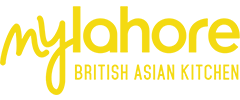As countless restaurateurs will tell you, EPOS software is an amazingly useful asset to any hospitality business. But choose a system that integrates well with other technologies, and the sky’s the limit.
That’s certainly why – as technology experts – we often get asked about integration by restaurant owners. So let’s explore the best of breed integrations that are available beyond the standard EPOS software, and highlight what they can do for your operations.
Why go for integration?
Today’s restaurants are looking to build on the capabilities of their EPOS technology to provide a more streamlined and digital experience that suits today’s demanding guests.
By integrating your software and hardware platforms you undoubtedly get something which is greater than the sum of all the parts. Integration enables you to be more productive by eliminating many manual tasks.
Integration also enables you to triangulate several data sets to create a complete picture of your operation. It’s easier to be confident about making good decisions when you have all the data at your fingertips.
When selecting a software solution for your business, always consider your options carefully, looking at what is the best of breed tool, and consider how it can be integrated into your current or proposed technology stack.
Integrate with what?
Let’s look at some of the technology options available for integration with your EPOS:
Labour scheduling
Labour can be expensive and difficult to manage. But Integration between your EPOS system and labour scheduling solutions means hourly sales figures are pulled from the EPOS in real-time, not once a day or overnight.
That means your managers genuinely know how busy the restaurant is at different times, allowing them to make good decisions about labour based on what’s actually happening now.
The sales figures are included in reports within the labour scheduling solution, such as the cost control report, broken down further by revenue categories, eg food and drink. Wage costs are shown – live – alongside these figures making it easy to compare revenue and wages across every part of the business.
With all this data in one place it is a simple process to analyse labour percentages and monitor labour across all restaurants – leading to informed and better decision-making based on optimum staffing levels.
The benefits of this integration are huge:
- Scheduling time is cut by up to 80%
- Labour costs are typically reduced by 3%
- Labour scheduling is based on accurate sales forecasts
- Further integration with payroll solutions guarantees accuracy and cuts admin
- Staff logins are cross-referenced to reduce unauthorised overtime – staff are encouraged to be more punctual too.
Reservations
Restaurant EPOS systems such as the Aloha Pulse mobile platform can combine seamlessly with reservations systems to offer integration with:
- Social media platforms such as Facebook
- Instagram and TripAdvisor so you can offer guests reservations where they hang out online
- Payment processors so you can handle online deposits and payments with ease and PCI compliance.
The system will work seamlessly with email marketing platforms, and will also offer support for in-app payments – guests can pay at the table using the reservation app.
Online delivery
A number of integrations are required to make a delivery operations a success:
- The restaurant EPOS system + third-party delivery platforms such as Deliveroo
- Mobile payment apps + the restaurant EPOS system
- The EPOS + kitchen delivery system to fire off orders
- EPOS + the stock management and delivery platform for accurate inventory
- EPOS + reporting so you can see the performance of your online channel
A two-way sync enables you to update menus in the EPOS and immediately update all online channels.
Inventory
Like labour, stock can be a huge variable cost with a direct impact on your bottom line. Integration between the restaurant EPOS system and inventory control systems gives a 100% accurate view.
Benefits include:
- Syncing stock items with the EPOS system down to recipe level for pinpoint accuracy
- Reduced paperwork – scan supplier receipts into the stock control so they are posted straight into the accounting system
- Elimination of double entry – the inventory pulls all order data from the restaurant EPOS system
- Information in real-time – get a dashboard view and get alerts of when you need to re-order
- Forecasting – enables you to reduce food waste effortlessly
- Streamlines the ordering process – stock orders are sent to suppliers automatically
Conclusion
While selecting the right restaurant EPOS system is one of the most important decisions you can make, the full power is released when it becomes the engine room of a larger technology ecosystem.
In this guide, we’ve only scratched the surface of what is available in terms of integration – watch this space for further blogs, or get in touch with any queries you have.
* Check out our digital transformation video for more ideas of how integration can revolutionise your operation.
















